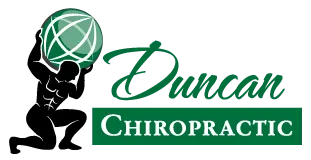
When we see any doctor, sometimes we feel like we are hearing another language as they try to explain
what is going on with our bodies and what the next steps are going to be to fix them. Doctors are
educated and trained to use these terms and sometimes don’t realize that, for us, it can be very
confusing and maybe even frustrating to not understand what the words they are saying actually mean.
Hopefully this list of terminology can help with your next visit to a chiropractor and to help you feel like
you are on you’re a-game.
1. Subluxation: When one or more of the vertebra of your spine has lost its normal alignment, it
creates nerve interference. This leads to dis-ease in your body and can lead to symptoms.
Chiropractors are the only professionals trained in the detection and correction of subluxations.
Technically (Vertebral Subluxation): The loss of normal position of a vertebra (spinal bone) in the
spine, causing nerve system interference between brain and body, and as a result, interference
to normal body function, leading to loss of health.
2. Innate Intelligence: The inborn wisdom of your body. Innate intelligence is what guides your
body in the miraculous, daily processes that are taken for granted. Innate is carried throughout
the nervous system to the entire body. Innate is what allows two cells to become a human child
and controls every function after that! Chiropractors want the innate intelligence of your body
to be expressed at its fullest.
3. Getting Checked: Chiropractors do not get paid to crack backs; they are paid to find out if you
have a subluxation (or other orthopedic abnormality). If you do, THEN they adjust you. A
person comes for chiropractic care to get CHECKED to find out what’s causing their pain. That
doesn't mean you will be ADJUSTED every time you come in.
4. Acute Back Pain: This is back pain that lasts a short while—usually a few days to several weeks.
Episodes lasting longer than three months are not considered acute.
5. Dynamic Thrust: A dynamic thrust is a chiropractic adjustment delivered suddenly and
forcefully to move vertebrae, often resulting in a popping sound.
6. Full-spine Technique: This technique is a method of adjusting or manipulating any of the
vertebrae from the neck down.
7. Kale Method: Variety of upper cervical adjustment in which a "toggle adjustment" or a sudden,
shallow thrust is applied to the side of the neck to correct atlas subluxations, often in a knee-
chest position on a special table.
8. Low-force Technique: Use of an adjusting machine and/or reflex technique said to be an
alternative to forceful manipulation ("dynamic thrust"). It may not be an appropriate substitute
for properly performed spinal manipulation.
9. Lumbosacral Strain: Strain or injury of joints or ligaments at the base of the spine where the
last lumbar vertebra (L5) is connected to the sacrum. Strain or disk degeneration in this area is
probably the most common cause of low-back pain.
10. Maintenance Care: Subluxation-based program of periodic spinal examinations and
"adjustments" alleged to help maintain the patient's health. Also called "preventative
maintenance."
These top ten terms are only a few of the thousands that chiropractors use every single day with each
patient. It’s important to remember that the doctor is so used to the term he or she may not even think
or know that you need some explanation. Never hesitate to ask your chiropractor to explain any
terminology or treatment options discussed. Their goal is to make sure you are comfortable with your
visit and to make sure you fully understand everything that has occurred. For more information or to
call and make your appointment today, call Dr. Duncan with Duncan Chiropractic Services!
